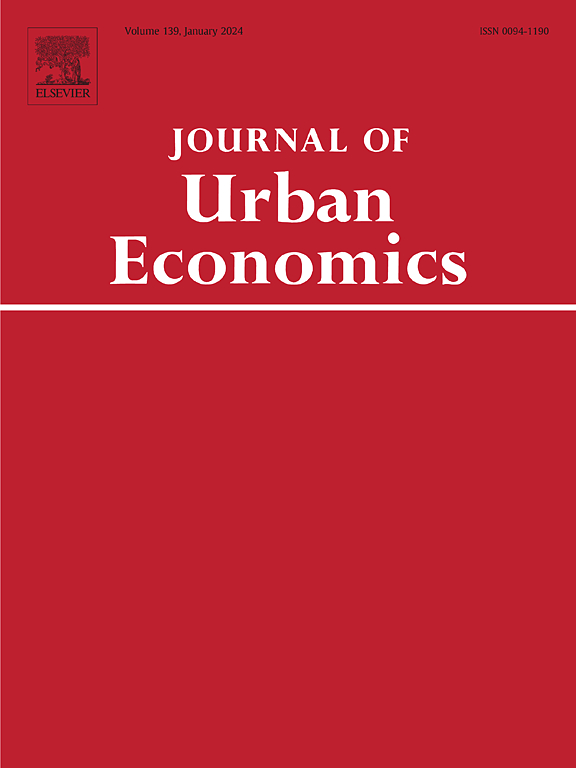中国以通勤为基础的大都市区
IF 4.8
1区 经济学
Q1 ECONOMICS
引用次数: 0
摘要
本文利用从手机定位数据中提取的精细地理层级的通勤流量,首次对中国基于通勤的都市圈(MAs)进行了划分。这些都市圈的规模分布遵循幂律,规模较大的都市圈拥有更多的技术工人、更高产的企业,并提供更高的工资溢价。与其他几个大国相比,中国以通勤为基础的大都市区呈现出几个显著特点。首先,通勤的时间和距离都很短,而且很少跨越行政边界。其次,相对于国土面积而言,中国的通勤补贴规模较小,通勤补贴规模与行政级别高度相关。我们讨论了可能导致这些特征的现有政策。我们证明,以通勤为基础的千年发展目标与其他中国城市定义有本质区别。对于那些需要将中国城市定义为本地劳动力市场,但又受限于官方划分的研究人员来说,基于通勤的千年生态系统提供了一个有价值的工具。本文章由计算机程序翻译,如有差异,请以英文原文为准。
China’s commuting-based metropolitan areas
Using commuting flows derived from cellphone location data at fine geographical levels, this paper presents the first delineation of China’s commuting-based metropolitan areas (MAs). The size distribution of those MAs follows a power law, with larger MAs hosting more skilled workers, more productive firms, and offering higher wage premiums. China’s commuting-based MAs exhibit a few notable features compared to several other large countries. First, commutes are short in both time and distance and rarely cross administrative boundaries. Second, China’s MAs are small relative to the size of the country, with MA sizes highly correlated with the administrative hierarchy. We discuss existing policies that may have contributed to these characteristics. We demonstrate that commuting-based MAs differ substantively from other definitions of Chinese cities. The commuting-based MAs provide a valuable tool for researchers who need to define Chinese cities as local labor markets but are limited by the availability of official delineations.
求助全文
通过发布文献求助,成功后即可免费获取论文全文。
去求助
来源期刊

Journal of Urban Economics
Multiple-
CiteScore
10.60
自引率
4.80%
发文量
64
期刊介绍:
The Journal of Urban Economics provides a focal point for the publication of research papers in the rapidly expanding field of urban economics. It publishes papers of great scholarly merit on a wide range of topics and employing a wide range of approaches to urban economics. The Journal welcomes papers that are theoretical or empirical, positive or normative. Although the Journal is not intended to be multidisciplinary, papers by noneconomists are welcome if they are of interest to economists. Brief Notes are also published if they lie within the purview of the Journal and if they contain new information, comment on published work, or new theoretical suggestions.
 求助内容:
求助内容: 应助结果提醒方式:
应助结果提醒方式:


